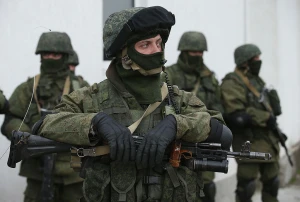
Start-ups redefine modern warfare: Ukraine gives glimpse of future of war
The war in Ukraine has showcased how start-ups can redefine modern warfare, offering crucial support that could shape future conflicts, experts say
The Atlantic writes about it.
In February 2022, when Russian forces invaded Ukraine, a satellite image from Capella Space revealed armored columns crossing the border. President Joe Biden cited this image as undeniable proof of the invasion. Remarkably, this image wasn’t from the U.S. military but from a Silicon Valley start-up, Capella Space, using advanced, cost-effective technology. It offered “the first unclassified, open-source satellite imagery that showed the imminent invasion,” said Payam Banazadeh, Capella’s founder.
Commercial technology played a key role in the war, with Ukrainian forces leveraging products from start-ups to counter the Russian military. Inexpensive drones, space-based sensors, and other commercial innovations proved vital. Even the HIMARS rocket launchers can be directed by commercial drones available on Amazon.
"Commercial technology has transformed virtually every domain of the war: communications, artillery, reconnaissance, air defense," the article notes. Companies like Skydio and BlueHalo supplied drones and counter-drone systems, enhancing Ukraine's defense capabilities, as well as technologies from HawkEye 360 and Anduril.
The Pentagon, however, faced challenges in quickly delivering commercial tech to Ukraine. The system is built for long-term projects, not for immediate needs, explained Jared Dunnmon, a senior adviser at the Defense Innovation Unit (DIU). Despite this, the DIU helped deploy over 30 systems to Ukraine.
Ukrainian start-ups also played a crucial role, developing cost-effective technologies like counter-drone systems and autonomous vehicles. “They were built to kill Russians, not navigate supply-chain bottlenecks or market themselves to the military or international investors,” the article reads. A drone factory in Kyiv, for example, converted commercial parts into kamikaze drones, used effectively in battles.
Despite the success, the Pentagon’s traditionalists argue that conventional weapons remain crucial. Bill LaPlante, the Pentagon’s chief weapons buyer, emphasized, “It’s hard-core production of really serious weaponry—that’s what matters … We’re not fighting in Ukraine with Silicon Valley right now, even though they’re going to try to take credit for it.”
Nonetheless, the war has pushed the U.S. military towards adopting more commercial technologies. The DIU's budget has increased, and initiatives like Replicator aim to develop autonomous systems at scale.
Ukraine’s experience underscores that commercial technology can complement traditional weapons, providing a strategic edge. The article emphasizes that America’s challenge is to harness this potential fully. Ukraine’s war offers a glimpse into the future of warfare and the U.S. must adapt.
- News














































